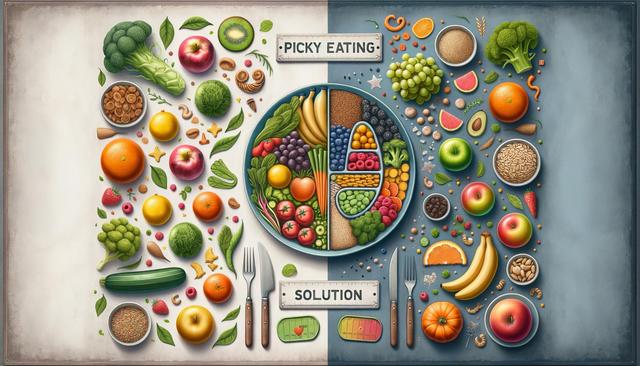
What to Do If Your Child Is Shorter Than Their Peers (Pediatricians Explain)
Understanding the Link Between Picky Eaters and Growth Delays
Many parents worry when their child appears significantly shorter than others their age. Pediatricians often explain that while genetics play a role, dietary habits can also influence height and overall development. One common challenge is dealing with picky eaters. Children who consistently avoid certain food groups may not get the essential nutrients necessary for proper growth, potentially leading to growth delays. These children might refuse vegetables, proteins, or dairy—key sources of vitamins, minerals, and proteins that support bone development and muscle growth.
It’s important to pay attention not only to what a child eats, but also to what they are missing. If a child routinely skips meals or avoids entire food categories, they may not be getting enough calories or nutrients, such as calcium, vitamin D, iron, or zinc. Over time, these nutrition gaps can add up, affecting not just height but also energy, immunity, and cognitive development. Pediatricians often assess growth charts and dietary intake patterns to identify underlying causes and recommend appropriate interventions.
Recognizing Nutrition Gaps and Their Impact
Nutrition gaps are not always obvious. A child may seem healthy and active, but still lack critical nutrients that support growth. This is particularly true for picky eaters, who may prefer processed foods or have a limited range of acceptable meals. These habits can lead to subtle deficiencies that aren’t detected until a growth delay becomes evident. Common indicators of nutrition gaps include:
- Slower than average height gain
- Frequent illness or fatigue
- Difficulty concentrating
- Poor appetite or digestive issues
Addressing these concerns starts with an honest look at your child’s eating habits. A food diary can help track what nutrients may be missing from their diet. Consulting with a pediatrician or a registered dietitian can provide guidance on how to incorporate more nutrient-rich foods in a way that appeals to selective eaters. In some cases, lab tests may be recommended to check for vitamin or mineral deficiencies.
How to Support Healthy Growth Through Diet
For children experiencing growth delays, a balanced and varied diet is key. Introducing a wide range of whole foods in creative ways can encourage picky eaters to expand their palate. Some helpful strategies include:
- Offering small portions of new foods alongside familiar favorites
- Involving kids in grocery shopping or meal prep
- Using fun shapes, colors, and presentations to make meals more appealing
- Creating a structured meal and snack schedule to prevent grazing
Incorporating foods high in protein, calcium, iron, and healthy fats is especially beneficial. Examples include eggs, legumes, Greek yogurt, leafy greens, fortified cereals, and nuts (where age-appropriate). These nutrients play a vital role in bone growth, hormone production, and overall development. Consistency is important—children may need multiple exposures to a new food before accepting it.
Natural Solutions to Enhance Nutrient Intake
When dietary changes alone aren’t enough, natural solutions can help fill in nutrition gaps. These might include child-friendly nutritional supplements derived from whole food sources or fortified multivitamins. However, it’s essential to choose products that are age-appropriate and approved by healthcare professionals. Supplements should be seen as a complement to, not a replacement for, a well-rounded diet.
Other natural approaches include focusing on digestive health and nutrient absorption. Probiotic-rich foods like yogurt or fermented vegetables can support gut health, which in turn helps the body absorb nutrients more effectively. Adequate sleep and regular physical activity also play a role in supporting growth by regulating hormones like growth hormone and promoting bone strength.
Parents may also explore natural foods traditionally known to support growth, such as:
- Sweet potatoes and carrots (rich in vitamin A)
- Chia seeds and flaxseeds (omega-3 fatty acids)
- Lean meats and tofu (iron and protein)
- Oats and barley (zinc and fiber)
These additions, alongside persistent and patient feeding strategies, can gradually improve the nutritional profile of even the pickiest eaters.
When to Seek Professional Help
While many children outgrow picky eating phases and catch up on growth, there are cases where professional support is necessary. If a child consistently falls below the growth curve or shows signs of malnutrition, a comprehensive evaluation by a pediatrician is essential. This may involve growth hormone testing, developmental assessments, or referrals to specialists such as pediatric nutritionists or endocrinologists.
Parents should also consider seeking help if mealtimes become stressful or if the child shows signs of food aversion or sensory issues. Early intervention can prevent long-term health complications and improve the child’s relationship with food. Family-based approaches, where changes in eating habits are encouraged for everyone at the table, often yield more sustainable results.
It’s important to remember that children’s growth patterns vary widely. Some may be late bloomers, while others may have a naturally smaller stature. What matters most is ensuring that the child’s body is receiving the nutrients it needs to grow at its own healthy pace. By addressing picky eating habits, identifying nutrition gaps, and exploring natural solutions, parents can support their child’s growth journey with confidence.
Conclusion: Supporting Growth with Patience and Practical Steps
For parents concerned about their child being shorter than their peers, it’s reassuring to know that many factors contribute to growth, and many of them are manageable. While picky eaters can present challenges, understanding and addressing nutrition gaps can make a meaningful difference. Natural solutions, including whole foods, dietary strategies, and professional guidance, offer a well-rounded approach to support healthy development. Most importantly, fostering a positive and patient environment around food can help children build healthier habits for life, giving them the foundation they need to reach their full potential.


